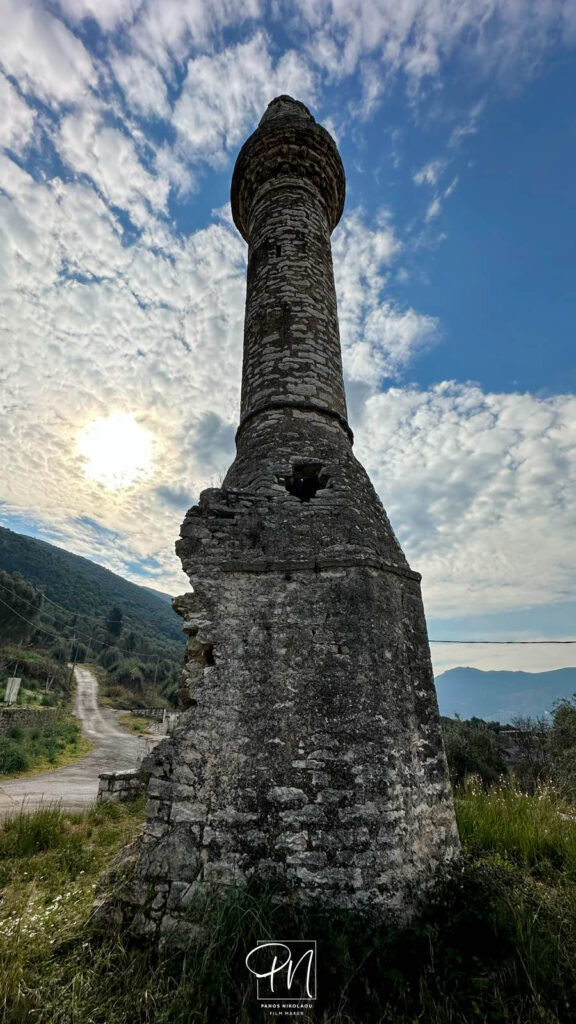Historical background
Margariti is 25 km from Igoumenitsa, is built near the area of Ancient Eleatida and is located between Paramythia, Parga and the river Acheron. In addition to its natural beauty, this village has a remarkable historical past, as evidenced by the castle, the minaret in Katavotra, the old mansions and the chapels.
Many ancient cities were found in the area, Margariti was founded before the 16th century. The Ottoman castle of Margariti was founded at the beginning of the 16th century. Margariti was the administrative seat of the Nahiyah of Mazaraki who renamed the city to its present name (1551).
Margariti in the 16th century
Censuses recorded 38 villages (1551) and 35 (1613), Margariti contained 17 households (1551) and 20 (1613). Paramythia, Margariti and Parakalamos were attacked by the Republic of Venice and the inhabitants of Venetian-occupied Corfu in violation of the Venetian-Ottoman treaty (1540). Venetian Marshal Girolamo Jeanet attempted to take the castle of Margaritio without success (1570). A group of Albanians from Margaritio travelled to Corfu to ask the Venetians for help in taking the castle of Margaritio from the Ottomans. The Venetian governor of Corfu refused because his forces were too few, only 250 men, and he could not face the more numerous Ottomans.
After Naval Battle of Nafpaktos (1571) the local chieftain Petros Lantzas became a dominant figure providing serious support to the Venetians in the siege. A large military force with chieftains from Parga and Paramythia under the command of the Venetian Marshal and later Doge Sebastian Venier captured and burned the castle of Margaritio after a four-day siege. The fall of Margaritius had a great impact on both Europe and the Greek populations of Epirus under Ottoman rule. The Republic of Venice commemorated the magnificent event of the fall of Margheritius by embossing it on the Doge's Palace. The fall of Margheriti was the last Venetian raid on Ottoman territories, in the following decades the area never became a battlefield.



Ottoman Influence
In the 16th century the garrison of Margaritiou was converted to Islam by Turkish-Albanian families such as the Mazarakis, the process was completed in 1571. In a century (1670) the Ottoman traveller Evliya Çelebi passed through Margariti, he recorded 200 houses in the castle of the settlement and 1200 around it. The town had an Albanian and Muslim population, there were two mosques but no Christian church.
The site of Margariti near the Venetian border became the focus of clashes between the Venetians and the Albanian beyens for control of the agricultural land between Margariti and Parga. In the Ottoman Empire it became the seat of the Kaza of Margariti, the population was Albanian and Greek-speaking. Later the Albanian Tsapari family emerged, in the late 18th century Hassan Tsapari held the plain of Fanari in the south. When Ali Pasha created the Pasaliki of Ioannina the Tsapari family clashed with him.
Margariti in the 20th century
In February 1913, the Greek army liberated Margariti from the Ottoman yoke, and with the Treaty of Lodin, it was united with Greece. The village elders refused the union with Greece, but many local beys accepted it. At the same time the town had a mixed population of Greeks and Albanians Chams.
The Chams were expelled by ELAS when World War II ended because they collaborated with the Nazis, in the 1920s the Hellenization of the city began, the Albanian aristocracy lost control. Margariti, however, was still until World War II one of the largest centers of the Albanian population and Chamuria. Fascist Italian troops occupied the town (1941), the Albanian Chamirs under the leadership of Sadiq collaborated with the Axis forces and proceeded to commit a series of horrific deaths against the Greeks. During World War II, all Albanian monuments in Margariti were destroyed. At the end of World War II the Chamies were moved under the instructions of the Germans north of Ioannina.
The settlement of Margariti on 14-08-1919, is designated as the seat of the Community of Margariti of Preveza. On 01-04-1937, it was detached from the Prefecture of Preveza and became part of the Prefecture of Thesprotia. On 04-12-1997, Margariti is defined as the seat of the Municipality of Margariti and on 07-06-2010 it is annexed to the Municipality of Igoumenitsa.
Historical Text: wordpress.org

